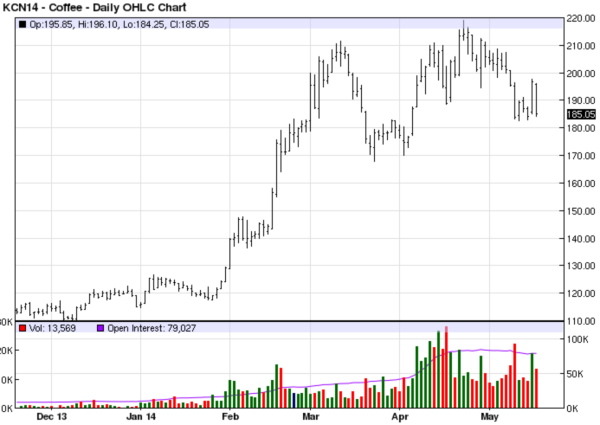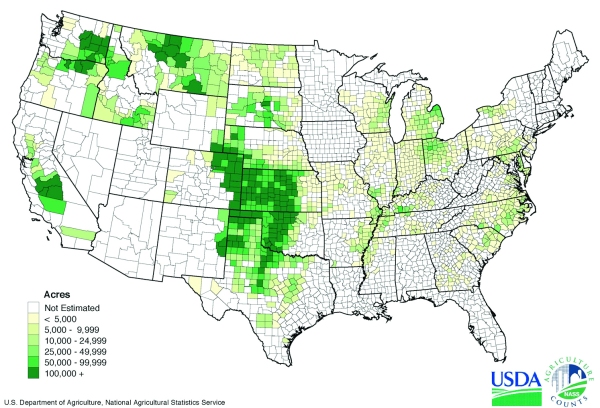The darling of this year’s commodity markets, arabica coffee, which at one point reached a return of 90% since the start of the year, has been taking a beating lately. On Friday, the July 14’ ICE coffee (KC) contract experienced its biggest one-day drop since 2011 of more than five percent, this after jumping 12 cents higher Thursday following Brazil’s Confab bureau announcement which cut the total coffee production estimate to 44.7 million bags.
The volatility has been wild in the past few months to say the least and it will probably continue, especially as the long-awaited harvest reports from Brazil start trickling in later this month. If these initial reports come in more positive than expected, we can expect coffee to keep grinding lower in the short term.
Looking at the July 14’ coffee chart, major resistance sits at the March low of 166. If that breaks, the technical momentum could quickly end this bull market faster than it started. Yet I believe the reality of the dwindling supply situation will reassert the bullish trend and push prices back well above 200.
But don’t take my word for it.
Judith Ganes-Chase, a long-time soft commodities analyst, told Agrimoney.com last week “In all my 30 years of covering commodities, I have not seen anything like this before” in reference to the supply concerns for coffee. She argues that the remaining estimated stocks for Brazil are not of good export quality, meaning that the supply cushion expected to absorb the drought losses may be worthless to buyers.
If she’s right, we may very well see prices top 300, perhaps even test the all-time high set in 1997. But right now the market is focused on global stocks estimates, with other analysts claiming the Brazil drought is already priced in along with other bullish news including El Nino, roya problems in South America and the replanting of robusta trees in Vietnam.
If you’re a long-term bull like me, sit on the sidelines for now until we can establish another upturn. For the bold, try to ride out the uncertainty with a very wide stop.
The risk is big but the reward could be much, much larger.


